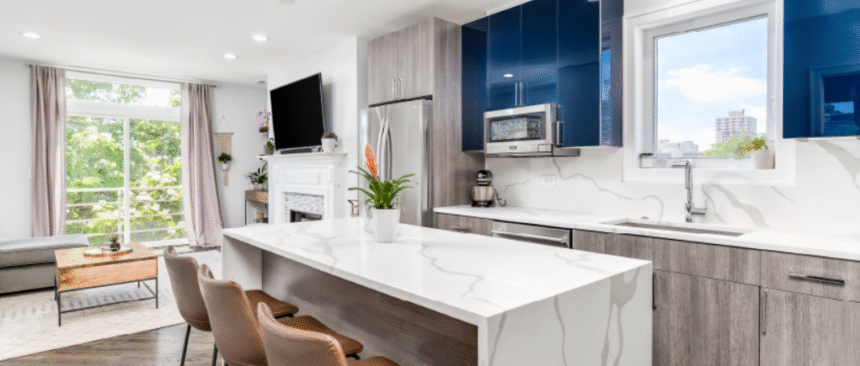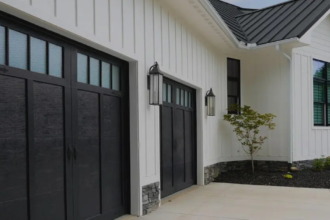The color of cabinets can change the feel of a kitchen—gray offers versatility and chicness. However, choosing between cool and warm grays can be a tough decision. Awareness of their differences lets homeowners be informed decision-makers, creating a welcoming and harmonious space.
Understanding Cool Gray
Gray cabinets kitchen designs often feature cool undertones like blue, green, or violet, creating a sleek and contemporary look. These shades pair beautifully with stainless steel appliances and glass accents, making them a favorite for modern and minimalist spaces. When choosing a cool gray, consider the lighting in your kitchen—natural light enhances these tones, while warm artificial light can mute them. Always test samples in the actual space to see how the color shifts throughout the day.
Warm Gray Characteristics
Warm gray has yellow, red, or brown in the undertone level. Warm, welcoming colors perfectly set the tone. They complement warm wood finishes and earthy tones nicely, making them an excellent option for traditional or rustic kitchens. Warm grays would make a room just feel inviting and lived in.
Think about how warm grays play with what you already have. Often, they look as though they are one with warm-colored tiles or countertops. Also, it is necessary to test the samples in different lighting conditions to get the desired match.
Choosing Based on Style
Cool gray should dominate a kitchen, while warm gray can complement it. Light gray is an ideal backdrop for a clean, contemporary aesthetic. The look features clean lines and understated design features. But warm gray is perfect for those looking for something more traditional or eclectic, prioritizing comfort and warmth.
For example, visualizing the space as a whole can help with decision-making. Consider how cabinets integrate with the larger design scheme. Using color swatches, mood boards, or digital mockups can offer homeowners clarity and help them visualize the result.
Room Properties (Size & Light)
Color choice is significantly affected by the size of the room and lighting. Cool gray tones are great for small kitchens, as they can help create a sense of space and airiness. Warm gray can create openness and depth in large spaces.
Light also affects how we see colors. Natural light shows accurate colors, and artificial light modifies them. Knowing how those traits behave informs one to select the correct gray for the specific room it’s in.
Harmonizing with Other Colors
Gray is a neutral color and complements all colors. Cool tones like blues or greens play nicely with cool gray cabinets for a crisp, modern vibe. In comparison, warm gray complements reds, yellows, or browns and helps create an attractive warmth.
Pay attention to the color temperature of the nearby stuff. Walls, countertops, and backsplashes selected to coordinate and complement the chosen gray create a visual flow. A carefully chosen color combination may upgrade even a kitchen reshaped to be functional and catch the eye.
Sampling and Decision Making
Testing samples is a must before deciding on a particular shade. Get samples of the paint and paint swatches on the cabinets and in different lighting. Knowing how they relate to other kitchen stuff is priceless information.
This time, color reflection is a way to feel confident in the final selection. Forum discussions with design specialists are a resource that can steer homeowners in the right direction. This service is offered for the modification of several variations.
Conclusion
Choosing the best gray cabinets requires knowing the differences between cool and warm colors. When selecting a color to complement the surroundings of their kitchen, homeowners can factor in elements such as style, light, and existing components, such as the backsplash, cupboards, and appliances. Choosing a color palette that reflects your taste and style can lead to an informed decision. It ensures the room feels uniquely yours while maintaining elegance.














